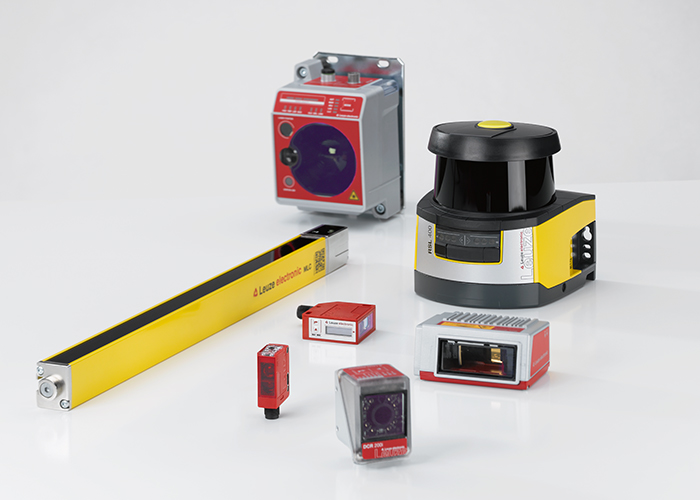Compact technology makes a big impression
Safety laser scanners have established themselves as efficient solutions for the protection of people and machines in automated systems and production environments. Benjamin Schmid, Chief Innovation Officer at Leuze, explains the advantages of this technology and why ultra-compact models are on the rise.
Mr Schmid, why do safety laser scanners play such an important role in many industrial applications?
Benjamin Schmid: Safety laser scanners are a key tool for reliably protecting people and machines in Industry 4.0. They provide enormous flexibility with their freely configurable safety zones that can be adjusted dynamically. One example is the safeguarding of automated guided vehicles in logistics: Here, the scanners not only have to detect obstacles, but also adjust the safety zones to the vehicle’s direction of movement at all times. They are also suitable for monitoring access to production plants, such as robotic welding cells. The scanner detects when someone enters the danger zone and can stop the machine immediately. This technology is also indispensable for collaborative robots, where laser scanners can flexibly monitor the working environment. They can then reduce the robot’s speed or stop it altogether when a person approaches. All this makes the devices indispensable in industrial automation in my view.
Compact devices have become increasingly important in recent years. Why is a safety laser scanner’s size and integration options increasingly crucial for system operators?
Benjamin Schmid: To put it a little more pointedly: In industry today, practically every millimeter counts. Production and logistics environments are becoming ever more densely packed, which often leaves less space for safety solutions. That means a safety laser scanner with small dimensions is much easier to integrate. There is also the issue of weight. Every extra gram counts, whether on machine fronts or robots, narrow conveyor lines or AGVs, where space is limited anyway. Sophisticated installation methods are another key aspect, as they can reduce installation costs by using simpler mounting brackets with no or only small housing constructions required for the safety components. Sometimes system operators will not even need to modify their existing system if the new scanner is significantly more compact than the old one. All of this reduces complexity, effort and therefore costs.
But can these ultra-compact scanners keep up with larger models in terms of performance?
Benjamin Schmid: Absolutely. Thanks to modern technologies, compact models are in no way inferior to their larger counterparts. Performance does not depend on size, but on the underlying technology. Even very small laser scanners offer the same precision and functionality – and in some cases even more. Ultra-compact devices such as our RSL 200 are ideal for use on AGVs and AMRs. It is currently the smallest safety laser scanner on the market, but thanks to its three-meter operating range and 275-degree scanning angle, it is also ideal for area guarding on machines and systems. All that with a smaller footprint. Of course, longer operating ranges are sometimes required depending on the system. In this case, it is worth getting a safety laser scanner like the RSL 400, the big brother with an operating range of up to 8.25 meters. This works with up to two independent protective functions and can therefore replace two scanners – which in turn makes up for the larger dimensions.
What else should system operators look out for in safety laser scanners?
Benjamin Schmid: It is important to analyze the specific system’s requirements. Does the scanner need to be stationary or mobile? What operating range and resolution are required? Besides size and performance, factors such as interfaces and flexibility also play a role in configuration and diagnostics. For the RSL 200, for example, we offer the RSL 200 app to access status information and diagnostic data. All important information can be captured remotely via Bluetooth. This can be very practical if the laser scanner is installed in system areas that are difficult to see, or if access to the device is restricted. The protective field does not need to be entered to read out the information, so the machine can continue working without interruption. Don’t forget: The new ISO 13855 has been in force since January 2025 and the basis for calculating the safety distance has changed. Every system operator therefore needs to have their systems and the positioning of protective devices checked in this regard – Leuze will be happy to assist with any questions.

Chief Innovation Officer
at Leuze






